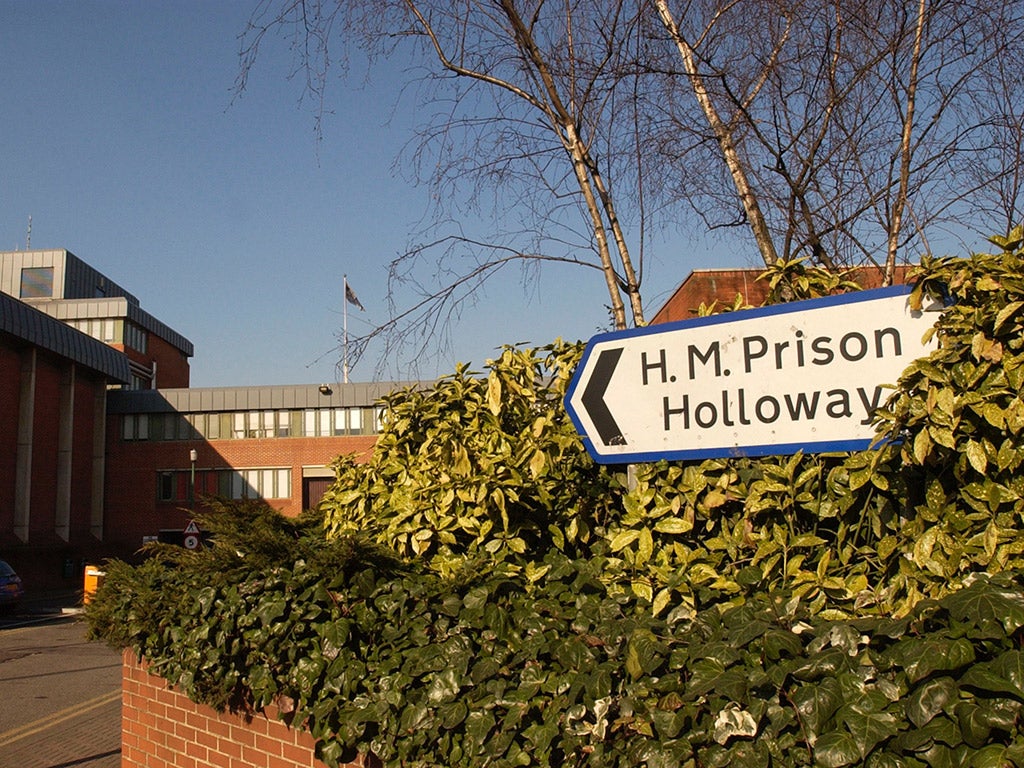Closing Holloway Prison to make room for luxury flats isn't a triumph, George Osborne - it's just cruelly ironic
Most of us never get inside the prison system, or inside the narratives of those who reside there. But at least these city prisons remind us that we aren’t actually ‘all in it together’

Those rat-infested, Victorian prisons. Dirty, expensive, violent. Osborne has just announced that he’s going to get rid of one of the most prominent old ones, the women’s prison at HMP Holloway, and we’re all supposed to give him a cheer. But wait – is this really cause for celebration?
I’ve worked in women’s prisons for seven years, so I find myself compelled to set the Chancellor straight on a few things. Firstly, there’s been a prison on-site at Holloway since the 1850s, it’s true, but the current one was opened in the 1980s. Not exactly Victorian, then. And it by no means has the worst conditions: HMP Holloway has a grading of 3 (1 terrible, 4 exceptional) from the MoJ and has almost 24 hours a week of purposeful activity for the women who reside there.
In fact, the last HMIP inspection of Holloway commented: “Despite the constraints of the physical environment and its size, most women, particularly the most vulnerable, were held safely and treated decently – although some significant shortcomings remained.”
The Inspectorate also noted the support for those who self-harmed or were otherwise vulnerable was better than in most prisons. At the time of the 2013 inspection, there had been no self-inflicted deaths since 2007: devastatingly, there has been one since. Its impact was felt throughout the prison, not least because it has become so unusual here due to the excellent staff, not the lack of people trying. These facts all point to a well-run, safe prison – more than can be said for some of the stories I’ve heard coming out of places like Pentonville and The Scrubs.
I find myself in a difficult position when faced with the closure of HMP Holloway. With all my heart I long for a justice system that plays a part in restoring and rehabilitating people and communities; a system that decides holding women, 80% of whom are incarcerated for non-violent crime, is a terrible idea and so, having funded robust community alternatives and small custodial units, embarks on a women’s prison closure plan.
So part of me does rejoice that Holloway is going to close and that rumours of serious reform are in the air. But there is significant infrastructure both inside and outside the walls of Holloway that cannot simply be transferred in a hot second to Surrey, where Bronzefield and Downview are located.
The significant advantage of Holloway is that women can be held close to their families and communities, with access to community agency support for when they leave. Holloway holds a lot of women from London, Kent and Essex. Try telling a mother from Colchester, who has already had her life blown apart by her daughter’s crime, that HMP Bronzefield has good transport links to London. It doesn’t – I’ve been there.
The other important thing about HMP Holloway is how incredibly visible it is to the rest of the public – which is one of its greatest advantages. Most of us never get inside the prison system, or inside the narratives of those who reside there. But at least these city prisons remind us that we aren’t actually ‘all in it together’, that the economic recovery isn’t felt by us all, and that inequality is still a pernicious force destroying our society.
We could rebuild smaller, modern prisons on these very sites – they’ve already done it once with Holloway, so we know it can be done. Anyone who thinks this ‘quick fix’ solution can work has clearly never experienced the hours I’ve spent with vulnerable women in homeless people’s units, trying to find somewhere for a person to sleep on the night that they come out of prison, only to eventually be left ringing round charities late into the evening when the stretched local authority refused to house survivors of domestic abuse or women work at risk of sexual exploitation.
Now, in a move that is cruelly ironic, the only home some people have known – prison – is due to be bulldozed and used as sites to build luxury flats that no-one on a normal salary, let alone benefits, will be able to afford. The central London location will no doubt make it exceptionally attractive to investors.
Closing prisons and reducing our use of criminogenic imprisonment by improving conditions are clearly a desirable aims. Using architecture and technology as a replacement for human interaction to save money is not, and does nothing to promote desistance from crime. Strong family relationships help people desist from crimes – how will these relationships be sustained with extra distance and extra cost?
However, there is a huge opportunity here to use alternatives to custody and to finally meet the policy recommendations set out in the 2007 Cortson Report. Bring on the small custodial units that allow women to be held near their children, so that their kids suffer a tiny bit less.
The proof of the pudding will be in the eating. This may yet be good news. So let’s see what kind of prison Mr Gove builds next and if he actually executes the things he learnt in Texas. Quality of life for so many people depends on it.
Join our commenting forum
Join thought-provoking conversations, follow other Independent readers and see their replies
Comments